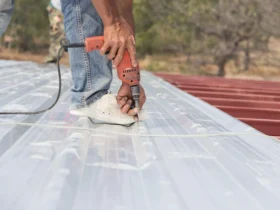It’s estimated that by age seventy, roughly 95% of men and women have bone spurs. While it’s true that bone spurs tend to affect older individuals, there’s a common misconception that it’s the only cause.
The reality is that bone spurs can also be caused by injury, trauma, and degenerative diseases like osteoarthritis. That’s why it’s important to be able to spot some of the common signs of bone spur elbow. This ensures that you receive treatment as swiftly as possible.
In this guide, we’ll quickly go over some common elbow bone spur symptoms and your potential treatment options.
1. Loss of Elbow Mobility
It’s important to note that for many people, bone spurs can go completely unnoticed. However, one of the first things people tend to notice is the loss of a full range of movement around your elbow.
Try to fully extend your elbow. If you aren’t able to, or you notice that you can’t extend it as far as you used to, you may have bone spurs.
2. Acute Pain In Your Elbow
Bone spurs themselves aren’t typically painful. They’re just small bumps that form around your joints. However, they become a problem when they begin to push up against nerves.
When this happens, you’ll likely notice a burning or tingling sensation around your elbow. Elbow stiffness is also common. If the spur presses up against your nerve enough, this can turn into a sharp shooting elbow pain.
3. Swelling Around Your Elbow
When your body senses an irritant, it will inflame the area to increase the flow of blood and nutrients necessary for the healing process. Inflammation is almost always accompanied by swelling.
So if you observe large amounts of swelling around your elbow, it’s another sign you could have elbow spurs.
You may like – Exploring the Different Ingredients Used in All Natural Gum
What Are Your Treatment Options for Bone Spur Elbow?
Since there are different causes of bone spurs, there are also a lot of different treatments. Typically, your doctor will try non-invasive options first. This will usually include physical therapy or cortisone injections.
However, if these treatments don’t work, your doctor might recommend elbow surgery that can remove the bone spurs. Typically for elbows, this involves keyhole surgery. The surgeon will make a tiny hole incision around your elbow.
Once they have access to the elbow joint, they’ll remove any of the bone spurs causing your trouble. It’s important to note that after this surgery, you will still need to go through physical therapy to get the full range of motion for your elbow back.
Appreciate Learning About Elbow Bone Spur Symptoms. Keep Exploring
We hope this guide helped you learn more about the common symptoms of bone spurs in the elbow. Remember that just because you suffer from a bone spur elbow doesn’t mean that you need to grin and bear it.
There are a lot of different treatment options that can reduce the painful symptoms you’re experiencing. Schedule an appointment with a professional to get the help you need. Craving more health advice? We have loads of similar content so keep exploring to find them all.






